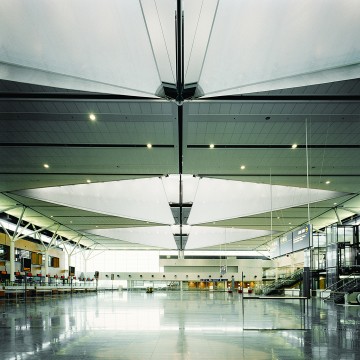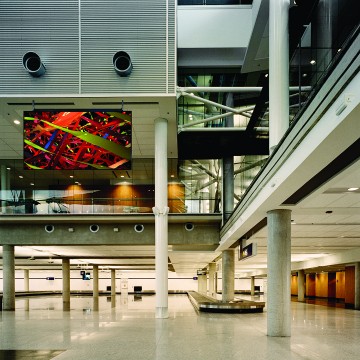1999-2005 Montreal-Trudeau International Airport expansion
An ambitious investment program was launched in 1999 by Aéroports de Montréal (ADM) to enhance the quality and functionality of the facilities at Montréal-Trudeau International Airport. The objectives of the program were to improve the quality of passenger service and the efficiency of operations for carriers and other ADM partners, as well as to increase the efficiency of international, transborder and transit passenger processing through the design of new world-class facilities in a context of an ever-changing air transportation market, an aging population and a changing airport security environment. Implementing such a project in an active airport environment presented significant challenges. The design of the new international and transborder piers was completed in this first phase, while the new transborder departures area was completed in a separate second phase from 2005 to 2009.
Location
Partners
Provencher Roy
Cardinal Hardy architectes (Lemay)
ARCOP
Scale
900 M$
Completion
1999 — 2005

The construction of the international wing, connection terminals and international arrivals (1999-2005) consisted of a new international wing featuring 36 check-in counters, 11 gates and their adjoining buildings and a new connecting terminal with 17 gates. The wings are also served by spacious rooms and various services, a network of clean corridors on the main level assuring the separation of arrivals and departures, and state-of-the-art extendable gateways. The project is completed by a new and majestic central block which integrates a customs zone as well as wide, functional baggage rooms.
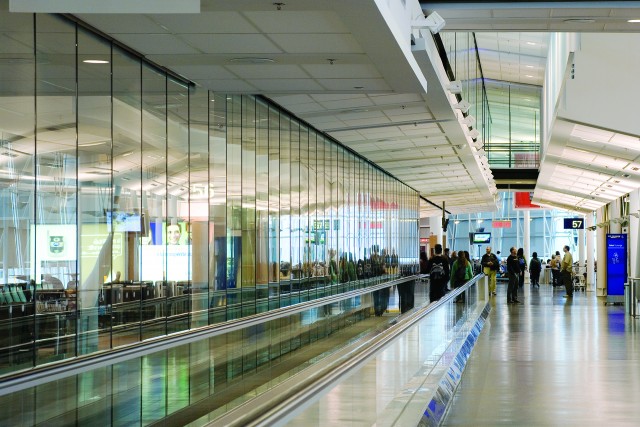
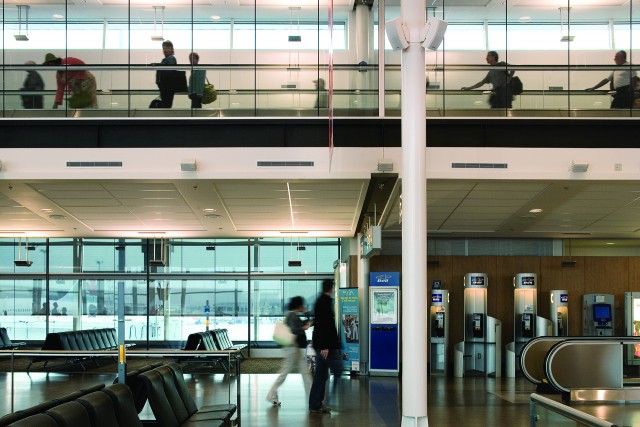
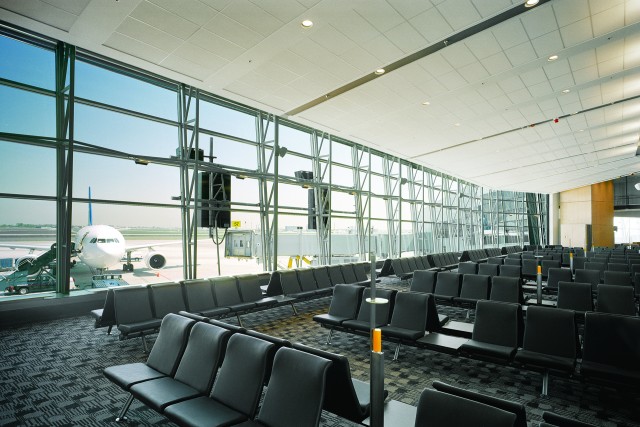
The architectural approach enhances functionality with the logical organization of spaces, facilitating the flow of travelers despite the initial obligatory separation between arrivals and departures. The draft concept rests on this functionality by introducing large open spaces, in which there are a series of internal spaces unified by their contemporary architectural treatment - using light, glass, granite and wood to materialize notions of transparency and opacity. The architectural signature is also marked by large mesh structures, which, by their very nature, assure the stability of the immense, glass zones of the exterior walls and accentuate the sought-after transparency.
